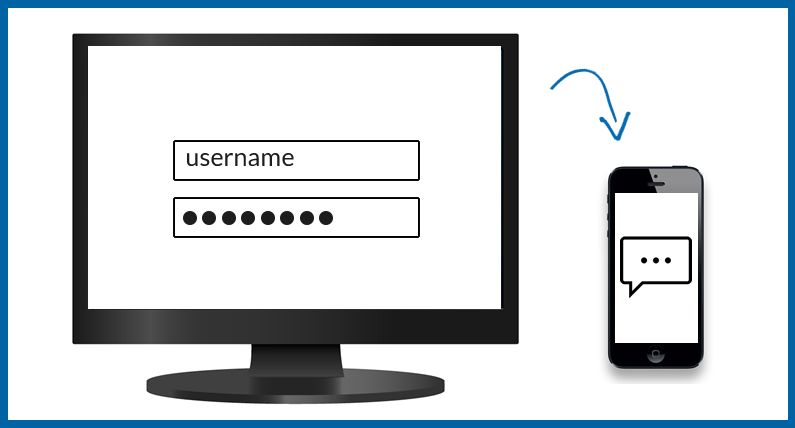
Two-factor authentication or 2FA for short is a newly developed security protocol that allows you to protect your online accounts with an additional layer of security.
How does 2FA work?
2FA works by tying a physical device, most commonly your smartphone, with an online account so that when you attempt to login, you not only enter your password, but also a code delivered to your device.
Example:
- You open your web browser and login to an online account with your username and password.
- After successfully entering your username and password, the system prompts you for an additional code, which is sent via text message to your smartphone.
- You enter the code, which expires after a short while, and are able to access your account.
How does 2FA improve security?
What 2FA is great for is protecting your account from unauthorized, remote access by a third party. If your password is compromised by a hacker or intruder, they also need access to your phone in order to access your account.
What accounts should 2FA be used for?
Your email account is the most logical account to protect with 2FA. Not only does your email account probably contain sensitive information, but it’s also the gateway to resetting, or gaining access to *all* the accounts that are tied to that email.
Banking, social media, and other important financial or health accounts should also be protected with 2FA.
Downsides
The downsides of 2FA are limited to the annoyance factor of having to enter a code on every login. While your smartphone, tablet, and PC may remember your login thereby limiting the number of times you have to enter a code, this annoyance can be an inhibiting factor in adoption. The other downside is a potential lockout if you do not have your device/smartphone. Usually, the account provider will offer a process to gain access to a 2FA account, but you’ll want to make sure that process is clear before enabling 2FA just in case you’re worried about losing or damaging your device.
The future of 2FA
2FA techniques are evolving. The goal is to make authorization more secure and easier, not harder. Facial recognition, thumbprint scanning, and other 2FA methods are being developed to further enhance and expand the adoption of this technique. More and more providers are also supporting 2FA as security becomes paramount to everyone’s digital lives.
